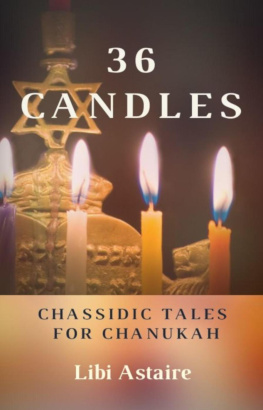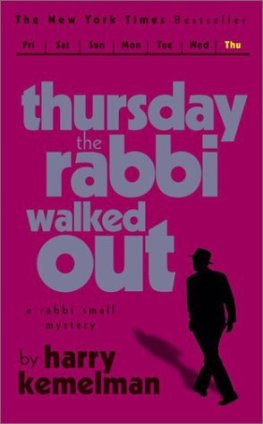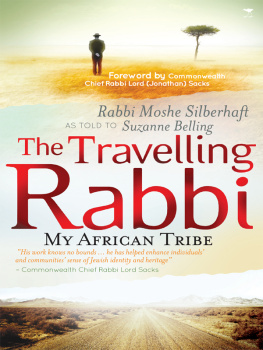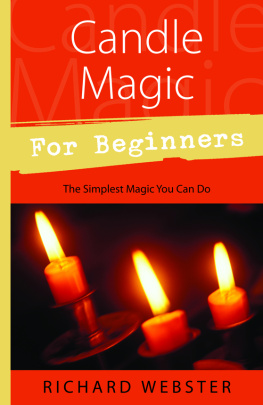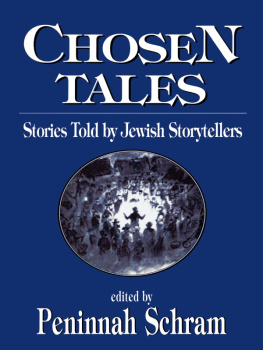36 Candles
Chassidic Tales for Chanukah
LIBI ASTAIRE
ASTER PRESS
First published 2010
Copyright 2010 Libi Astaire
Cover Image: Copyright iStockphoto.com/Daniel Fiverson
All rights reserved
Published and distributed by:
Aster Press
Kansas-Jerusalem
A Note About This Text:
The Jewish people have many names for God, which come from many languages. In the stories that follow these names appear:
Hashema Hebrew word meaning The Name
Aibishtera Yiddish word meaning Most High
Ribbono Shel Olama Hebrew phrase meaning Master of the Universe
The words Rabbi and Rebbe are used to designate a spiritual leader. Reb is a courtesy title used for ordinary Jews.
Contents
I n Kislev, the ninth month of the Jewish year, the days are at their shortest. Yet it is just at this time that Chanukah, the Festival of Lights, occurs. Whats more, the first night of Chanukah is on the 25th of Kislev, when the waning moon begins to disappear from view. This means that during the week of Chanukah not only is the night long, but its also very, very dark.
It is precisely against this background of intense darkness that one of Chanukahs most powerful lessons shines forth so brightly: Never despair! Miracles do still happen. Light can be found whenand wherewe least expect it.
Perhaps this message explains the holidays appeal, regardless of our religious affiliation. We all go through ups and downs in life, and its all too easy to feel stuck when were at the bottom. But gazing at the Chanukah lights has a miraculous effect on just about everyoneand this ability of the Chanukah candles to refresh the spirit is no coincidence. The candle of God is the soul of man, Proverbs 20:27 tells us. When we gaze at the Chanukah lights we come in touch with the soul, which is our deepest, truest self; we come face to face with the inextinguishable power within each and every one of us to illuminate even the darkest corners of our lives and overcome all obstacles. True, on the first night of Chanukah, when just one flame is lit, the light is small and weak, like the soul when it is buffeted by a sea of troubles. But on each night of Chanukah the lights increase. As we see them grow stronger, how can we not become stronger, too? As we see the darkness retreat, how can we not become filled with new hope, fresh courage, and renewed determination?
36 Candles charts both this struggle and its progress by presenting eight thoughts for Chanukah that are followed by thirty-six illustrative storiesone story for each candle that is lit during the holidays eight nights.
Many of the stories come from the vast treasury of lore belonging to the mystical religious movement called Chassidus, which was founded in the eighteenth century by Rabbi Israel ben Eliezer, the Baal Shem Tov. Others take their inspiration from the Mussar (ethical) movement founded by Rabbi Israel Salanter a century later. Some stories take place in the Eastern European shtetls (small towns) of hundreds of years ago, while others take place in Manhattans Lower East Side. Some happened in the death camps of the Holocaust, while others occurred in the courtyards of Jerusalem. What they all have in common is an inner light, a revelation of the eternal power of the soul, which still casts its glow today.
Jerusalem
Chanukah 5771 (2010)
F irst Night, One Candle :
The Greatest Miracle of All!
C hanukah is associated with several miracles, yet its easy to overlook the greatest miracle of all: The fact that there are still Jews in the world, and that we are still bringing the light of Chanukah into our homes.
Whats so amazing about that? To understand the miracle of continued Jewish existence we first have to understand what the Chanukah story is all about.
When Alexander the Great conquered the known world of his time, he conquered the tiny Kingdom of Judea along with the other nations. Under Alexanders rule the Jews were allowed to follow their own customs and laws, but after he died his kingdom was split into three parts. Judea fell under the power of the Syrian-Greeks.
The Syrian-Greeks resented the Jews, who rejected Greek culture, with its emphasis on superficial external beauty, and stubbornly clung to their own tradition. In an attempt to persuade the Jews to adopt Greek practices, the Greeks carpeted Judea with altars to their gods, stadiums for their games, and pleasure halls for their feasts. When the Greeks saw that these peaceful means of persuasion werent working, King Antiochus sent his army to persuade the Jews through violence.
During the war that ensued, thousands of Jews were slaughtered. Many others fled to the hills, where they lived in caves to escape detection. Meanwhile, the Greeks desecrated the Temple in Jerusalem by building an altar in the Temples courtyard and sacrificing a pig, whose blood was brought into the Holy of Holies. The Menorah, the seven-branched candelabra that stood inside the Sanctuary, and the flasks of pure olive oil needed to light it were also defiled.
Then the tide turned. Matisyahu and his five sonsthe Maccabeesgathered a small army from among those who had fled to the hills and caves. In this battle of the few against the many and the weak against the mighty, the Jews vanquished their enemy and drove the Greeks out of Judea. When the Jewish army came to Jerusalem to cleanse and rededicate the Temple, they found only one flask of oil that hadnt been defiled by the Greeksand so a question arose. Should they light the Menorah, even though the flask of oil would last for only one day? Or should they wait until new oil could be prepared, a process that would take eight days?
As we know, they decided to light the Menorah with the undefiled flask of oil. The Talmud tells us, in Shabbos 21b: A miracle occurred and they were able to light with it for eight days. The next year they established and made these days into a holiday, for saying songs of praise and thanks.
Chanukah therefore became a national holiday. But some two hundred years later Judea once again fell under the grip of a foreign power, the Roman Empire. During the era of Roman rule, the Temple was destroyed, the Menorah disappeared, and the Jewish people went into a 2,000-year-long exile that has lasted until this very day.
Next page
